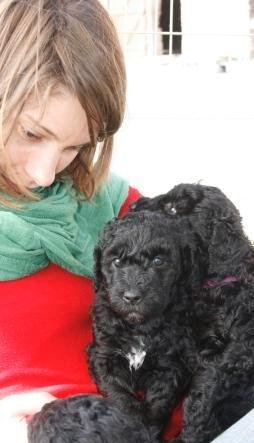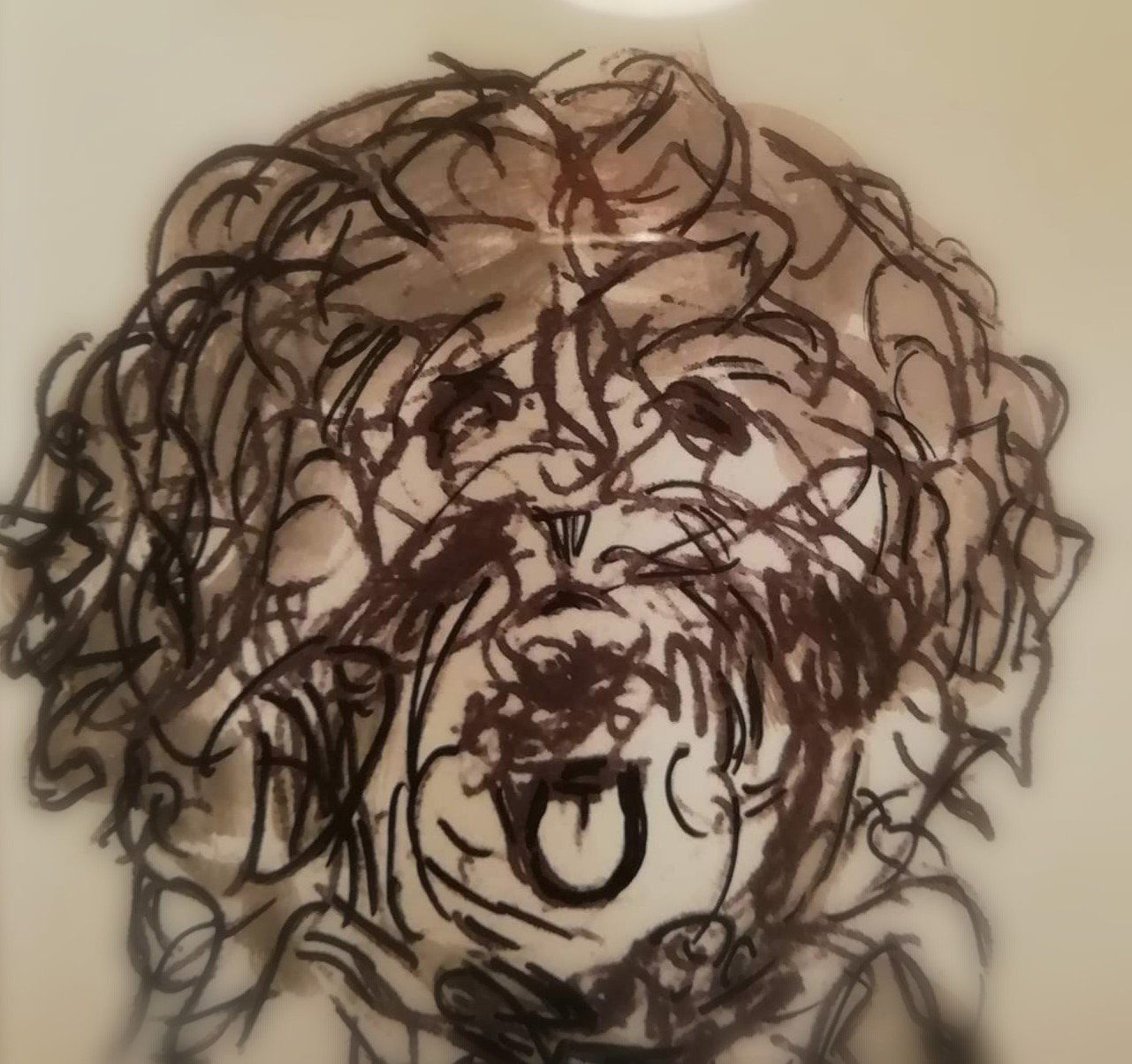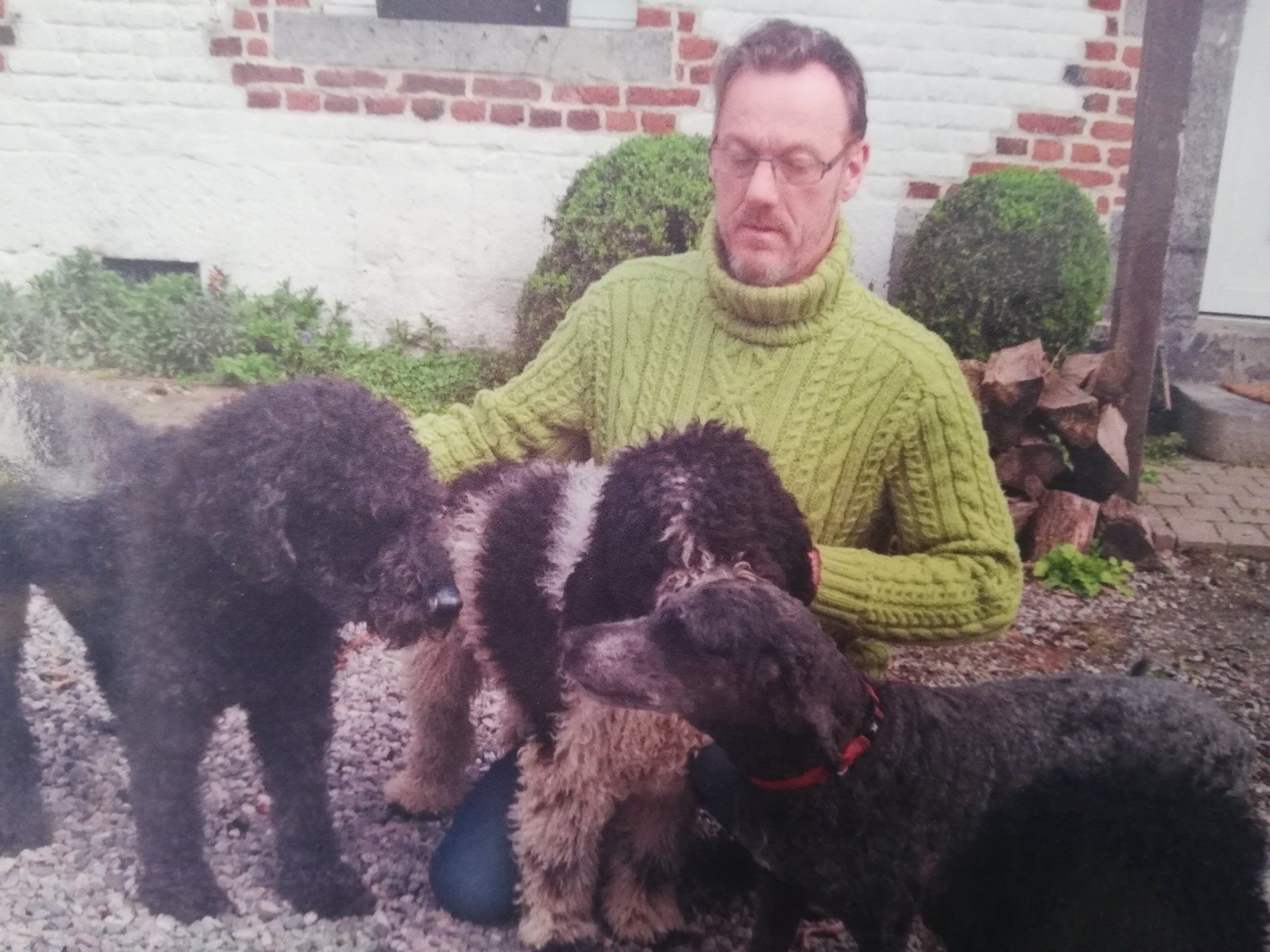Breeding yes, but quality!
And with family!
Why family breeding?
Quite simply, it's not our main source of income. It's the physiotherapy practice that keeps the pot boiling. Breeding is the union of our two passions: a love of breeds and breeding.
Our dogs are first and foremost our pets. If they can reproduce, so much the better, we love taking care of the puppies, but if it's not possible, it's not a problem. So, currently, we have 5 dogs living with us. One male and 4 females, but only one reproduces and two are retired. The 3rd? It's Mirabelle who had to be put away from breeding, she will never be a mother. But that doesn't stop her from being a sweetheart, and from being a full member of our family.
Of the
dogs family!
Our small breeding is family-run, and this is very important to us. This means that the puppies are born in the dining room and spend their first three weeks of life there, before moving into their own room, which is much larger and adapted to their development. But they regularly return to invade our dining room to learn about family life. We also pay particular attention to the socialization of the puppies.
This also means that we deliberately limit ourselves to one or two litters per year, in order to devote ourselves to each puppy, and also to give it the best possible environment for its development.
In accordance with the breed standard, we try to produce square and massive dogs, and especially with woolly and curly hair, which is THE characteristic of the Barbet.
We are seeing more and more dogs on the sites and in the rings (shows) that are too light and have wavy coats. This represents a threat to the breed. A Barbet must have a curly and woolly coat. We are fighting to preserve this characteristic.
Côté santé :
- We maintain a relatively low inbreeding rate. But be careful, not zero, because we want to produce a certain type of dog and therefore we practice what is called close inbreeding.
- We only breed dogs that are free of hip dysplasia. Therefore, all our breeding dogs are x-rayed at one year of age, and only those with A or B hips are allowed to breed. We also ensure that the puppy's grandparents are free of dysplasia.
Today, thanks to scientific advances, we can also carry out genetic tests to determine whether potential breeders carry certain specific genes, for example in terms of color!
We also carry out these tests to ensure that the puppies will not suffer from pathologies:
- prcd-PRA (eye disease).
- We exclude dogs carrying type 1 Willebrand's disease from breeding.








